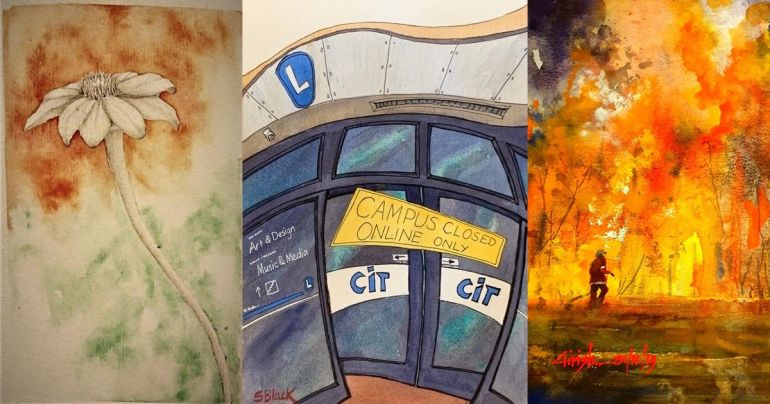Resilience 19;20 a CIT student-led community exhibition
Published: 29 Jul 2020

Fires, drought and hail are some of the troubles Canberra experienced over the past few months. The community's ability to overcome these challenges is what the Resilience 19;20 exhibition, a project led by Canberra Institute of Technology (CIT) students, sought to underscore.
Five CIT students, Jodie Lear, Beth Rogers, Amy Kirk, Shavorne Bush and Sonja Haynes, pursuing Certificate IVs in Community Services (CHC42015), Community Development (CHC42115), Mental Health (CHC43315) and Alcohol and Other Drugs (CHC43215) remained firm on their objective with a focus on resilience.
The exhibition encouraged community members to share their reflections through creative art forms. Some people shared their paintings, drawings and photographs, whilst others viewed different art expressions that may have resonated with them.
"We hoped to provide a way for people to express any experiences, thoughts and feelings they may have gone through as a result of the bushfires, smoke, hailstorm and then COVID-19," Beth said.
"We have been very happy with the response given the current situation. We have had 36 pieces contributed from 13 people at this stage."
Originally planned as a permanent art exhibition within the Community Services hub at CIT Bruce, Resilience 19;20 was quickly moved online in response to the COVID-19 pandemic. Rather than building a website for the exhibition, Resilience 19;20 was hosted on the CIT Student Association's (CITSA) Facebook page, which has an established online presence.
"We had a lot of support from our teachers before lockdown particularly as we worked through re-thinking our project, and afterwards online through web meetings and emails," Beth said.
Over the past couple of years, student-led projects resulted in permanent murals and exhibitions displayed on campus. Libby Bailey, CIT Community Work Teacher explained, similarly to Resilience 19;20, past projects relied on the application of Community Development Theory which thrives on community participation. "It is a process through which community members learn to communicate, listen, utilise the skills they already have and build upon them to make a better place through community connections," Libby said.

